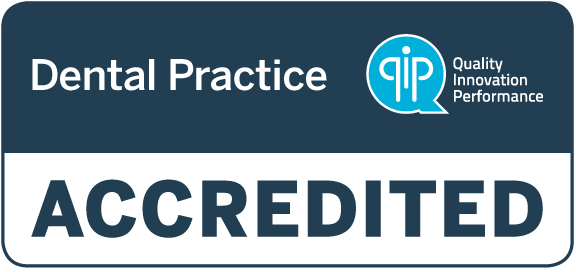Restorative Treatment
Sealants
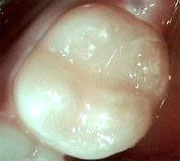 Sealants are clear or shaded plastic coatings which protect the grooved and pitted surfaces of the teeth, especially the chewing surfaces of back teeth where most cavities in children are found. It is very difficult to clean the tiny grooves and pits on certain teeth, therefore food and bacteria build up in these crevices, therefore increase risk of dental decay. Teeth such as the 6 and 12-year old molars and primary molars are most susceptible to decay will benefit most by sealants. The recommendation for sealants should be considered on a case-by-case basis.
Sealants are clear or shaded plastic coatings which protect the grooved and pitted surfaces of the teeth, especially the chewing surfaces of back teeth where most cavities in children are found. It is very difficult to clean the tiny grooves and pits on certain teeth, therefore food and bacteria build up in these crevices, therefore increase risk of dental decay. Teeth such as the 6 and 12-year old molars and primary molars are most susceptible to decay will benefit most by sealants. The recommendation for sealants should be considered on a case-by-case basis.
Sealants last generally 2-4 years. If your child has good oral hygiene and avoids biting hard objects, sealants will last longer. Our paediatric dentists will check the sealants during routine dental visits and can recommend re-application or repair when necessary. The application of a sealant is quick and comfortable. Child will be able to eat right after the appointment.
Sealants are only one step in the plan to keep your child cavity-free. Proper toothbrushing, flossing, balanced nutrition, limited snacking, and regular dental visits are still essential to keep teeth healthy.
Restorations
Composites / Glass Ionomer or white fillings are used to restore fractured and/or decayed teeth. The shade of the restoration material is matched as closely as possible to the color of the natural tooth.
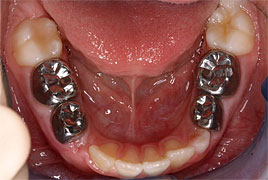
Stainless steel crowns
Stainless steel crowns are silver colored "caps" used to restore primary or permanent molars that are too badly decayed or grossly broken, or have undergone pulp therapy, or with enamel defects.
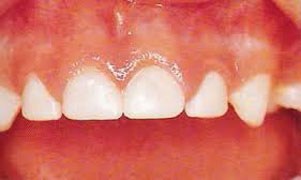
Composite resin strip crown
Composite resin strip crown is the best choice in restoring extensive decayed or broken baby front tooth. It provides a good aesthetics and durable restoration.
Pulp Therapy – “Children’s root canal”
Pulp therapy is the treatment of infected nerves and blood vessels in teeth. With the proper pulp treatment, the tooth can be preserved for chewing food and maintaining proper space for permanent teeth.
Extensive dental decay and traumatic injury are the main reasons for a tooth to require pulp therapy. The two common forms of pulp therapy in children’s teeth are the pulpotomy and pulpectomy.
A pulpotomy removes the diseased pulp tissue within the crown portion of the tooth, followed by the placement of medicine to prevent bacterial growth and to calm the remaining nerve tissue. This is followed by a final restoration (usually a stainless steel crown). Tooth extraction is avoided.
A pulpectomy is required when the entire pulp of the tooth is dead. The diseased pulp tissue is completely removed from both the crown and root. The canals are cleansed, disinfected and in the case of primary teeth, filled with a resorbable material. Then a final restoration is placed. A permanent tooth would be filled with a non-resorbing material.
Extractions & Space Maintainers
Extractions (remove the tooth) are done only as a last resort. If a primary molar is removed prematurely, a space maintainer will be placed. Some extractions of primary and/or permanent teeth are needed for orthodontic reasons to help facilitate tooth alignment.
Space maintainers are used when a baby tooth has been prematurely to hold space for the permanent tooth. A space maintainer helps to prevent future space loss and dental problems.
If a baby tooth is lost too soon, the teeth beside it may tilt or drift into the empty space. Teeth in the other jaw may move up or down to fill the gap. As a result, lack of space in the jaw for the eruption of permanent teeth. So, permanent teeth are crowded and come in crooked. If left untreated, the condition may require extensive orthodontic treatment.
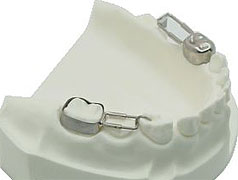 Space maintainers are appliances made of metal that are custom fit to child’s mouth. They are small and unobtrusive in appearance. Most children easily adjust to them after the first few days. Space maintainers hold open the empty space left by a lost tooth and prevent movement of the remaining teeth until the permanent tooth takes its natural position in the jaw.
Space maintainers are appliances made of metal that are custom fit to child’s mouth. They are small and unobtrusive in appearance. Most children easily adjust to them after the first few days. Space maintainers hold open the empty space left by a lost tooth and prevent movement of the remaining teeth until the permanent tooth takes its natural position in the jaw.
Regular dental visits are needed to monitor the space maintainer. The space maintainer can be removed when the permanent tooth closes to eruption.





